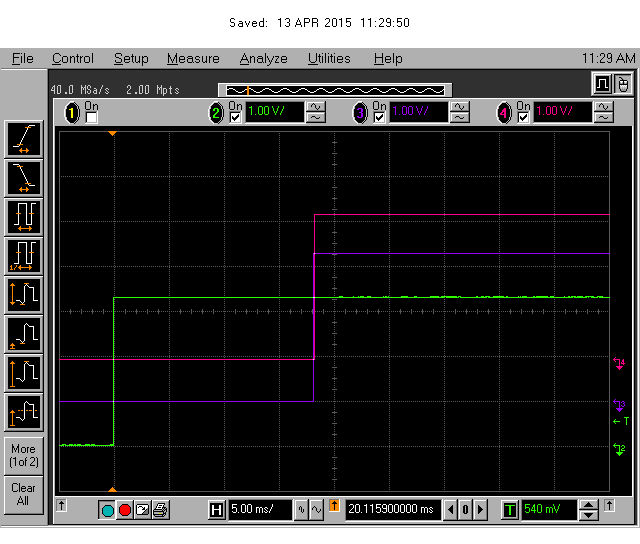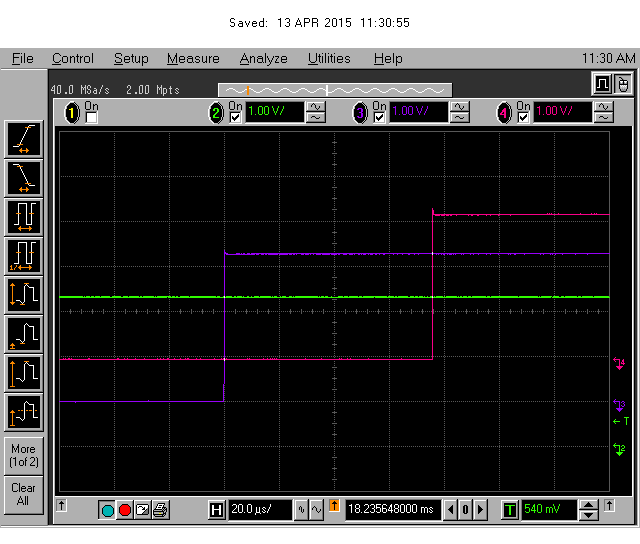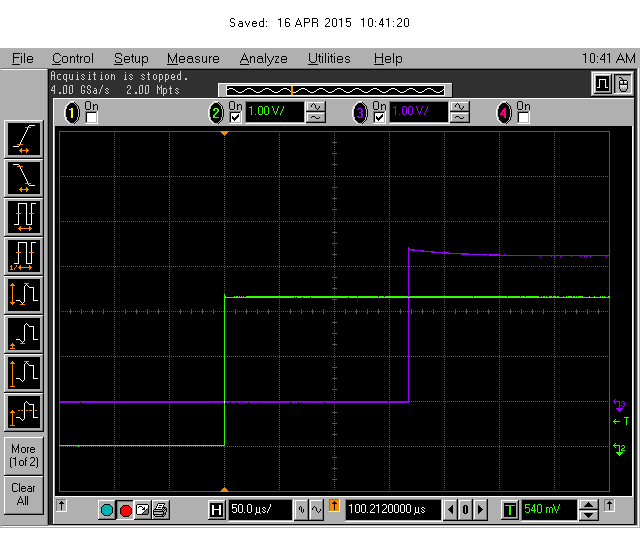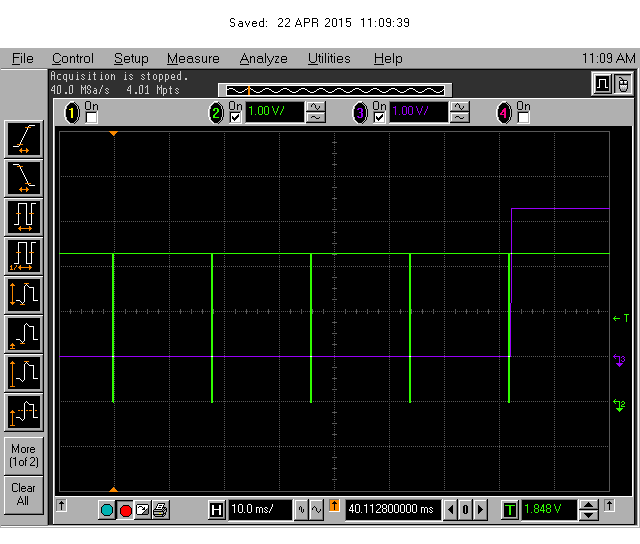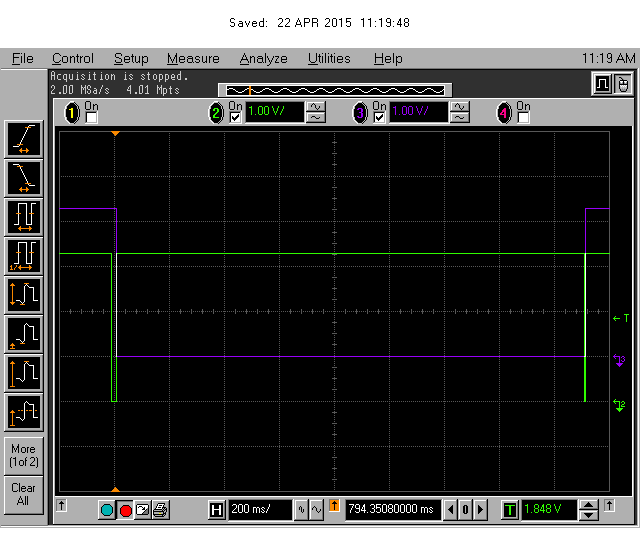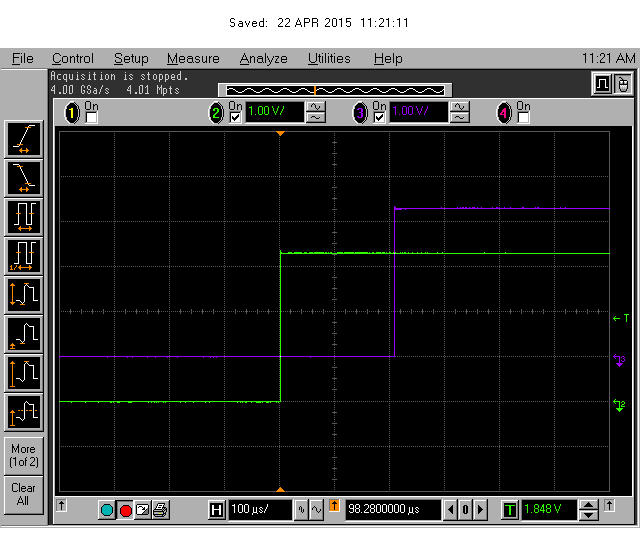Hi team,
My customer is asking about lock detection time.
They measured the lock time at MUXout pin.
When CE pin goes down between 1,700ms, the lock time is needed 75ms after CE pin goes high.
However, RF output is stabled output frequency after 0.5ms from CE pin goes high.
There are too difference time between output stable and MUXout pin.
Could you please explain why the differ has been caused?
and if you have any idea to reduce the time of MUXout pin, please let me know.
Best Regards,
Yuki


